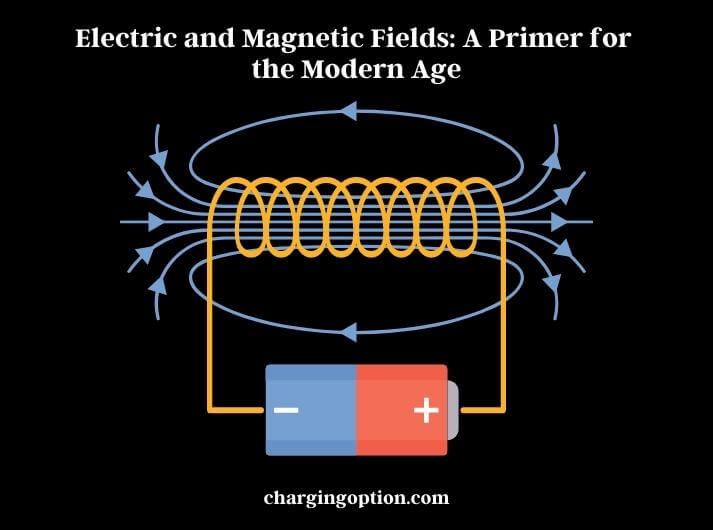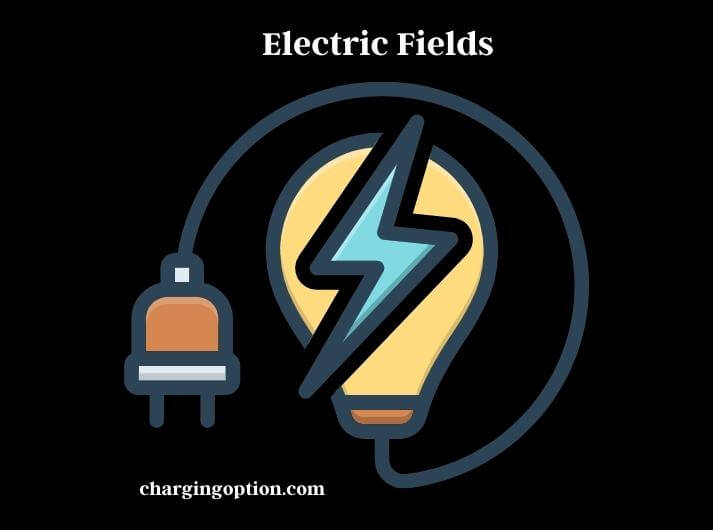Electric and magnetic fields are fundamental concepts in physics that describe the behavior of charged particles and magnetic materials. These fields are essential to our understanding of the natural world, as they play a critical role in everything from the behavior of subatomic particles to the functioning of everyday devices like electric motors and generators.

Electric fields are created by electric charges, which can be either positive or negative. The strength of an electric field is determined by its magnitude and direction, which can be calculated using Coulomb’s law. Electric fields can exert forces on other electric charges, which can cause them to move or change their behavior. Electric fields are used in a variety of applications, including particle accelerators, medical imaging, and electric generators.
Magnetic fields are created by moving electric charges or by magnetic materials. The strength of a magnetic field is also determined by its magnitude and direction, which can be calculated using the Biot-Savart law.
Magnetic fields can exert forces on magnetic materials, which can cause them to move or change their behavior. Magnetic fields are used in a variety of applications, including MRI machines, electric motors, and maglev trains.
The relationship between electric fields and magnetic fields is described by electromagnetism, which is a fundamental force of nature. This relationship is described by Maxwell’s equations, which show how changing electric fields create magnetic fields, and how changing magnetic fields create electric fields.
Electromagnetic waves, such as radio waves and light, are examples of this relationship in action. These waves are created by oscillating electric and magnetic fields, which propagate through space at the speed of light.
Electric Fields
Electric fields are created by electric charges, which can be either positive or negative. The strength of an electric field is determined by its magnitude and direction, which can be calculated using Coulomb’s law. Coulomb’s law states that the force between two electric charges is directly proportional to the product of the charges and inversely proportional to the square of the distance between them. This means that the closer two charges are, the stronger the electric field between them will be.

Electric Charges
When a charged particle is placed in an electric field, it will experience a force that is proportional to the strength of the field and the charge of the particle. This force can cause the particle to move or change its behavior in other ways.
Electrically Charged Particles
When an electric field is present, it can cause electrically charged particles to move or change their behavior. For example, an electric field can cause electrons to flow through a wire, which is the basic principle behind electric generators and motors.
Electric Field Lines
Electric field lines are used to visualize the strength and direction of an electric field. Electric field lines are drawn perpendicular to the surfaces of charged objects and point in the direction that a positive charge would move if placed in the field. The density of electric field lines indicates the strength of the field, with closer lines indicating a stronger field.
Electric fields have a wide range of applications in our everyday lives. For example, electric fields are used in particle accelerators to accelerate charged particles to extremely high speeds. Electric fields are also used in medical imaging techniques like MRI machines, which use strong magnetic fields to create images of the human body. Electric fields are also used in electric generators, which convert mechanical energy into electrical energy.
Magnetic Fields
Magnetic fields are created by moving electric charges or by magnetic materials. The strength of a magnetic field is determined by its magnitude and direction, which can be calculated using the Biot-Savart law. The Biot-Savart law states that the magnetic field at a given point is proportional to the current flowing through a wire and inversely proportional to the distance from the wire.
it’s important to know that together, voltage, current, and resistance form the basis of Ohm’s Law, a fundamental equation that describes the relationship between these three variables. Click here for more information.
Magnetic Materials
When a magnetic material is placed in a magnetic field, it will experience a force that is proportional to the strength of the field and the magnetic moment of the material. This force can cause the material to move or change its behavior in other ways.
Electrically Charged Particles
Another important property of magnetic fields is their ability to influence the behavior of electrically charged particles. When a magnetic field is present, it can cause charged particles to move in circular or spiral paths, which is known as the Lorentz force. This behavior is the basis for the operation of electric motors and generators, which convert electrical energy into mechanical energy and vice versa.
Magnetic Field Lines
Magnetic field lines are used to visualize the strength and direction of a magnetic field. Magnetic field lines are drawn in a way that shows the direction of the magnetic force that would be experienced by a north pole if placed in the field. The density of magnetic field lines indicates the strength of the field, with closer lines indicating a stronger field.
Magnetic fields have a wide range of applications in our everyday lives. For example, magnetic fields are used in MRI machines to create images of the human body. Magnetic fields are also used in electric motors, which are found in everything from household appliances to electric cars. Magnetic fields are also used in maglev trains, which use magnetic levitation to travel at high speeds without touching the ground.
Relationship Between Electric Fields and Magnetic Fields
Electric fields and magnetic fields are intimately related to one another, and their interaction is fundamental to many physical phenomena. This relationship is described by Maxwell’s equations, which are a set of four equations that describe the behavior of electric and magnetic fields.
Changing Electric Field
One important relationship between electric and magnetic fields is that a changing electric field will create a magnetic field, and a changing magnetic field will create an electric field. This phenomenon is known as electromagnetic induction, and it is the basis for the operation of generators and transformers.
Lorentz Force
Another important relationship between electric and magnetic fields is the Lorentz force. When a charged particle moves through a magnetic field, it will experience a force perpendicular to both the direction of motion and the direction of the magnetic field. This force is proportional to the charge of the particle, the strength of the magnetic field, and the velocity of the particle. The Lorentz force is the principle behind the operation of electric motors.
Electromagnetic Waves
The relationship between electric and magnetic fields is also apparent in electromagnetic waves. Electromagnetic waves consist of oscillating electric and magnetic fields that propagate through space at the speed of light. The direction of the electric field is perpendicular to the direction of the magnetic field, and both fields oscillate in phase with one another.
The behavior of charged particles in electric and magnetic fields can be used to manipulate them for a variety of purposes. For example, charged particle beams are used in medical applications like radiation therapy for cancer treatment. The motion of charged particles in electric and magnetic fields is also used in mass spectrometry, which is a technique used to determine the composition of a sample.
Comparison of Electric Fields and Magnetic Fields
Electric fields and magnetic fields are both types of fields that are fundamental to the behavior of charged particles. While they are similar in some ways, there are also important differences between them.
Origin
One key difference between electric fields and magnetic fields is their origin. Electric fields are created by stationary charges, while magnetic fields are created by moving charges. This means that electric fields can exist even in the absence of motion, while magnetic fields require some form of motion to be present.
Behavior Around Conductive Materials
Another difference between electric fields and magnetic fields is their behavior around conductive materials. Electric fields are largely shielded by conductive materials, while magnetic fields are able to penetrate them. This is why we can use metal cages to shield against electric fields, but magnetic fields are more difficult to block.
Different Units of Measurement
Electric fields and magnetic fields also have different units of measurement. Electric fields are measured in volts per meter (V/m), while magnetic fields are measured in teslas (T) or gauss (G). One tesla is equivalent to 10,000 gausses.
A changing electric field will create a magnetic field, and a changing magnetic field will create an electric field. This relationship is fundamental to the operation of generators, transformers, and many other electrical devices.
Are you wondering if you can put a Hellcat engine in a V6 Charger? We’re here to give you the answer and a whole lot more. Read The article for details.
Conclusion
Electric fields and magnetic fields are fundamental concepts in physics that are critical to our understanding of many physical phenomena. These fields are intimately related to one another, and their interaction is governed by the principles of electromagnetism, which are described by Maxwell’s equations.
Electric fields are created by stationary charges, while magnetic fields are created by moving charges. Electric fields are largely shielded by conductive materials, while magnetic fields are able to penetrate them. These fields have different units of measurement and can be harnessed for practical applications.
From the operation of generators and transformers to the development of medical treatments, the relationship between electric fields and magnetic fields has important implications for our everyday lives.
References:
